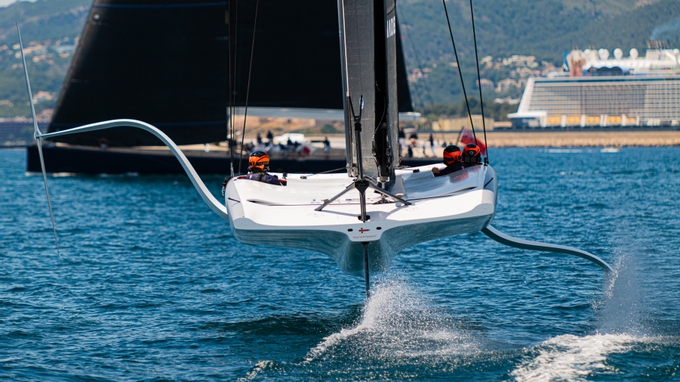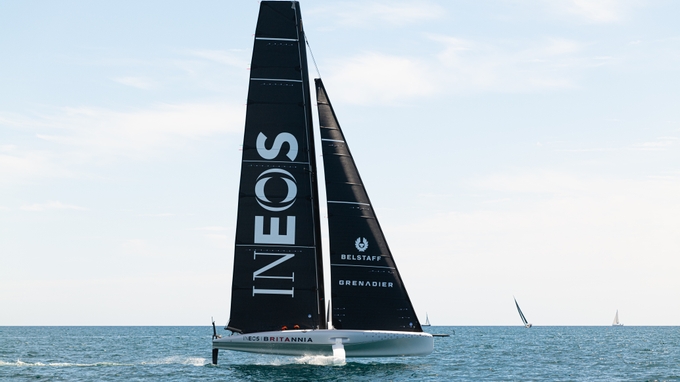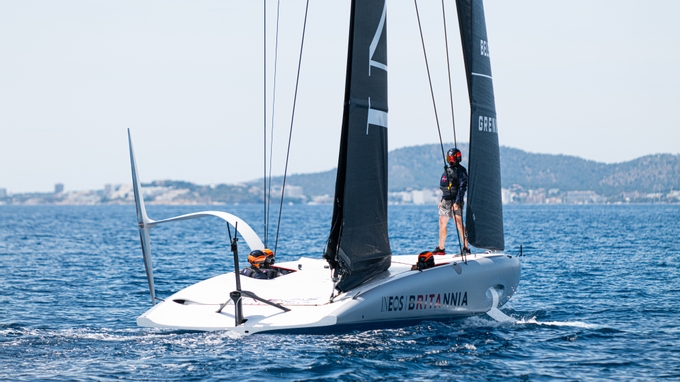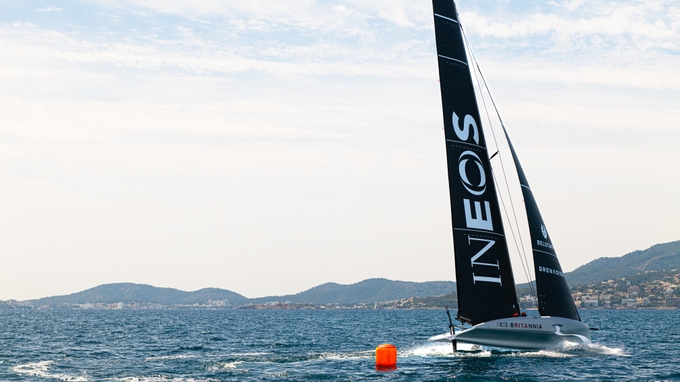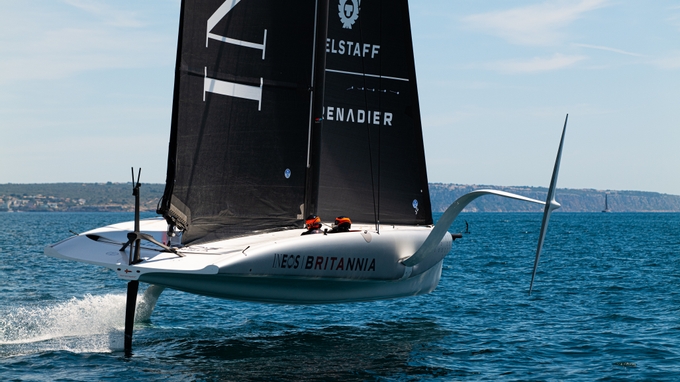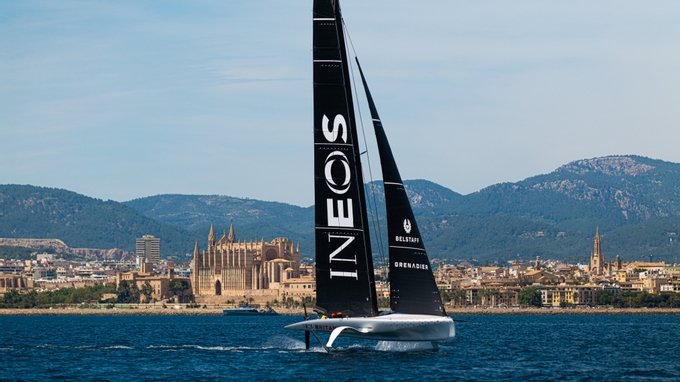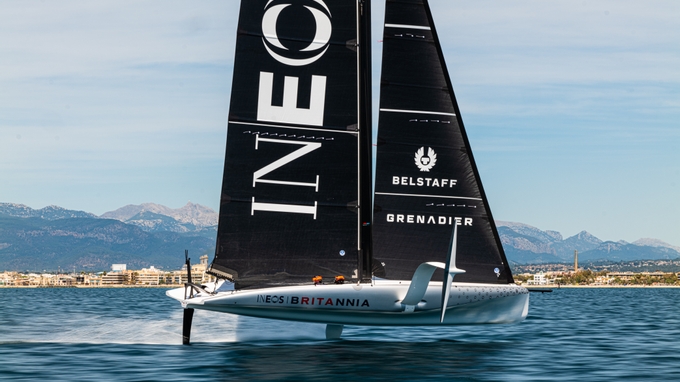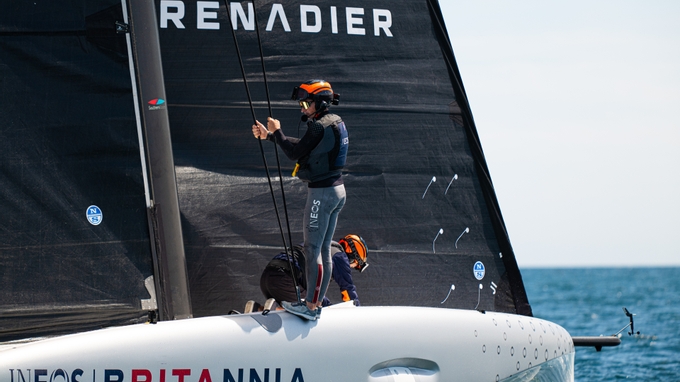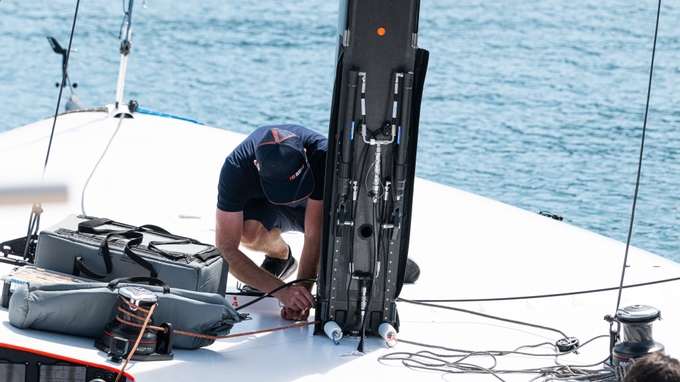TRIMMER’S TRIMMER
It was a light-weather day for INEOS Britannia on Wednesday in the AC40 as the sailors ran through some race simulations out in the Bay of Palma, “pushing to the bottom of the range,” as Leigh McMillan described it.
Valuable in a sense that during the summer and into the pre-regattas, the teams will certainly face lighter summer Mediterranean breezes and a day for the helms to be super-accurate on the exits and the trimmers to keep on keeping the power on. Unfortunately sailing was curtailed after an hydraulics issue that couldn’t be solved on the water and the next planned sailing day is Tuesday next week.
A tweakers day, so who better to sum it up than Leigh McMillan, a double Olympian in the Tornado Class, arguably one of the fastest foiling sailors of this generation and a real go-to trimmer in the America’s Cup world? Leigh talks us through the perfect tack and gybe, the transitions and co-ordination that the British are building into their programme and reviews the day with Justin Chisholm, esteemed yachting journalist and a vital part of the INEOS Britannia Recon Team in this America’s Cup cycle. A great watch for those interested in the mechanics of what makes an AC40 go fast.
VIDEO – LEIGH MCMILLAN, INEOS BRITANNIA TRIMMER & FLIGHT CONTROLLER
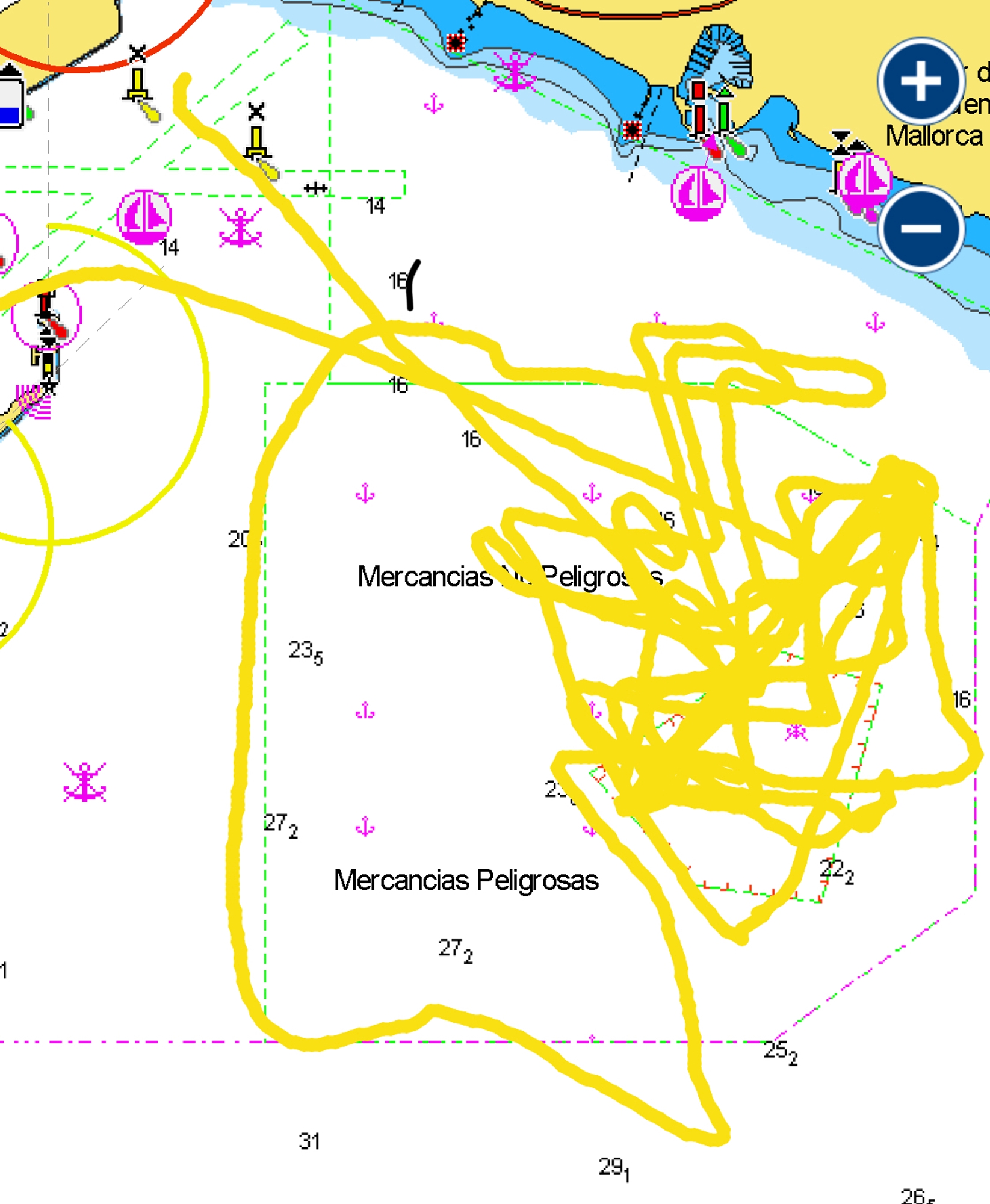
On Water Recon Notes: Another day of AC40 manoeuvre practice for INEOS Britannia saw lighter conditions to the previous day with winds rising from 6 knots to 9 knots slowly but steadily over the afternoon. The British team launched their boat at 1150, docked out at 1304, and had sails up (M1-1 mainsail and J2-1 headsail) by 1335.
After self-taking-off in no more than 7 knots of wind on flat water, the crew – helmsmen Giles Scott and Dylan Fletcher with trimmers/flight controllers Bleddyn Mon and Leigh McMillan – stayed airborne for just 10 minutes before falling off the foils after a tack. A tow up followed with the crew breaking free downwind for a 30-minute flight during which they experimented with tacks and gybes as well as bear-aways and round ups. This flight ended after they fell off the foils downwind following a light airs gybe at 1430.
While the change was made between the J2-1 and J1-1 headsail the coaching team laid a windward leeward practice course with a leeward gate and one windward mark. After a simulated three-minute prestart manoeuvring session the crew crossed the start line just one second late after slowing the boat by lowering the windward foil on final approach to the line and set off on two fast laps of the (approximately 1 nm course) in approximately 15 minutes.
Unfortunately, at the bottom of the second downwind leg the boat fell off the foil after a gybe and stopped. A chase boat was quickly alongside, and a technician dispatched down the bow hatch to try to remedy what was believed to be a hydraulics issue. After 30 minutes of trying but ultimately with no on-the-water fix possible, time was called on the day.
Sails were dropped and stowed by 1615 before the boat was towed into the harbour in displacement mode for a dock in at 1640. The team are now not scheduled to sail until Tuesday next week.
Dock out: 1304 Dock-in: 1640
Weather AM: High level cloud but sunny and warm 20-22°C
Weather PM: High level cloud but sunny and warm 22-24°C
Wind Observations: AM: Flat calm PM: 1315: 180 5 knots; 1400: 240 6-7 knots; 1600: 220 8-9 knots
Sea State PM: Flat to very slight chop
Onboard Today.
Helms: Giles Scott / Dylan Fletcher-Scott
Crew: Leigh McMillan / Bleddyn Mon
Sails Used:
Mainsail (M1-1): 2 hours 50 minutes
J1 (J1-1): 2 hours
J2 (J2-1): 30 minutes
Total Tacks: 23 – 17 foil-to foil, 2 touch & go, 4 touchdowns.
Total Gybes: 16 – 15 foil-to-foil, 0 touch & go, 1 touchdown.
Take-off speed: 19 knots at 60° TW
Take-off: Self-take-off with one tow-up downwind.
